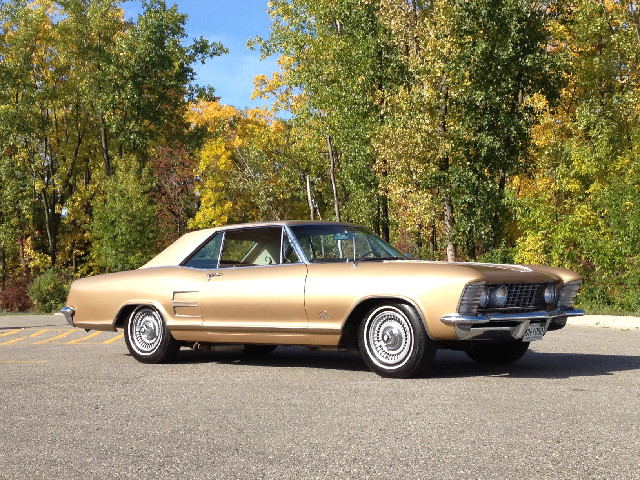Buick Riviera Marks 50th Anniversary
The delayed response to a competitor’s success, a renowned designer’s vision for a European-inspired American grand touring coupe, and deep-rooted corporate rivalries would not seem the ideal circumstances for birthing a successful car. But from that unlikely mix emerged a bona fide American classic, the 1963 Buick Riviera.
Advertised as “Buick’s bid for a great new international classic,” the Riviera caused a sensation when it was introduced at the Paris Auto Salon in October 1962. The hardtop coupe won praise from three of the world’s most respected designers, Sergio Pininfarina, Raymond Loewy and Sir William Lyons.
The acclaim very much fit the Riviera’s narrative as a designer’s car. Succeeding Harley Earl, William L. Mitchell had become head of GM design in 1958, in time to put his stamp on the cars that would usher out the tailfin era. That same year, Ford transformed the two-seat Thunderbird into a larger “personal luxury” car, launching a new niche that caught General Motors napping.
The following year, as Thunderbird sales soared past 90,000, Mitchell instigated the design of a GM “style leader” that could stand with the world’s best. He wanted a car that was more daring and more elegant than the Thunderbird, and more engaging to drive, too. Impressed by a drawing from Ned Nickles, Mitchell asked the young designer to combine the elegance of a Rolls-Royce – particularly its sharply creased roofline – with the aggressive stance of a Ferrari.
By early 1960, the concept had become full-scale model known as the XP-715. Tall vertical grilles capping its jutting front fenders were meant to evoke the center grille of the 1939 LaSalle, from Cadillac’s defunct sub-brand. Mitchell even put “LaSalle II” badges on the model, but Cadillac passed on the car, as did Chevrolet.
Buick, aided by a polished presentation from its ad agency, McCann-Erickson, then won an internal GM competition to build the unnamed coupe. Mitchell cared mainly that the division that got the new model would preserve its design. Buick did just that, dubbing it “Riviera,” also fitting Mitchell’s vision of European elegance. To build the Riviera, Buick shortened its big-car chassis to 117 inches and pulled liberally from the company’s parts bins.
Although the Riviera design sprang from Mitchell’s admiration for disparate European luxury models, the car arrived as an American original. The body deftly blended soft curves with sharp creases in a new design language known as the “Sheer Look.” Frameless door glass was an instrumental feature and made the pillarless coupe look even airier. The egg crate-style grille – also something Mitchell liked on Ferraris — carried four exposed headlights; the 1965 model would realize the original concept of hiding the lights in the fender pods, behind electrically powered clamshell doors.
A four-seat interior, divided by a center console, echoed European themes, but with luxurious detailing and comfort American buyers preferred. A choice of Buick’s 325-horsepower 401 or 340-horse 425 cubic-inch V-8s came teamed to the final version of Buick’s Dynaflow transmission, called Super Turbine. Motor Trend clocked 0-to-60 mph in eight seconds with a 425-motored version, which was quicker than a Thunderbird. Buick ad copy boasted of a low center of gravity and “specially tuned” suspension, and road testers found the Riviera handled better than the heavier Thunderbird, as well.
The Rivera’s $4,333 base price barely undercut Thunderbird’s $4,445. Buick sold out its planned 40,000 Rivieras for 1963. It was a success, to be sure, but Thunderbird outsold it two-to-one.
Today, the 1963 Riviera finds one of its biggest admirers in Nicola Bulgari, head of the luxury watch and jewelry company of that name. Among his seven Rivieras are two restored 1963 models, one kept in Italy and one for the U.S.


